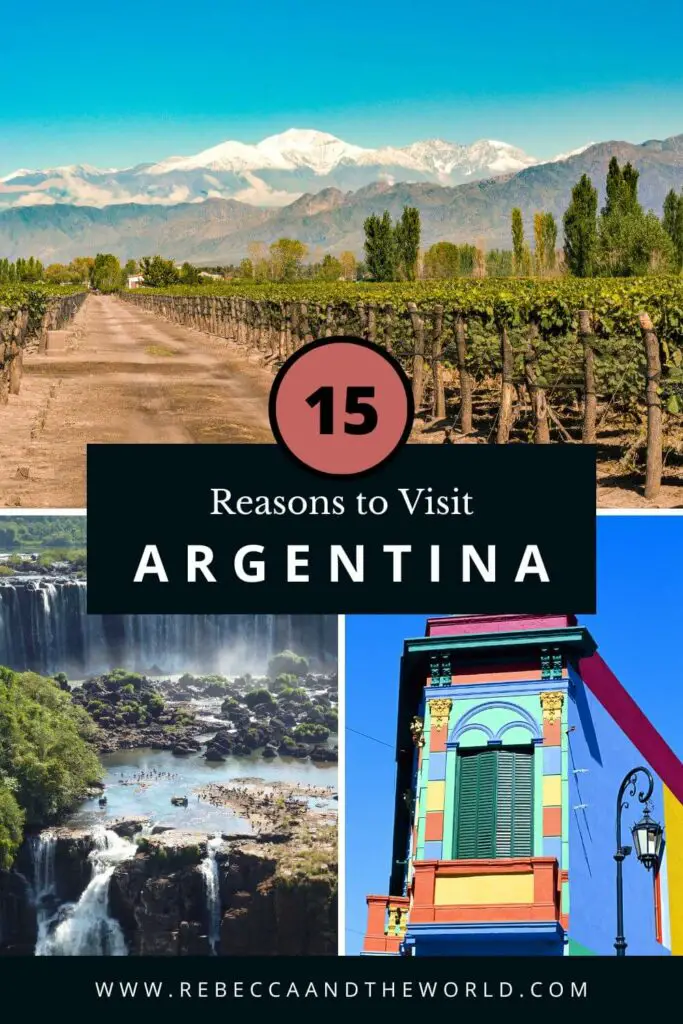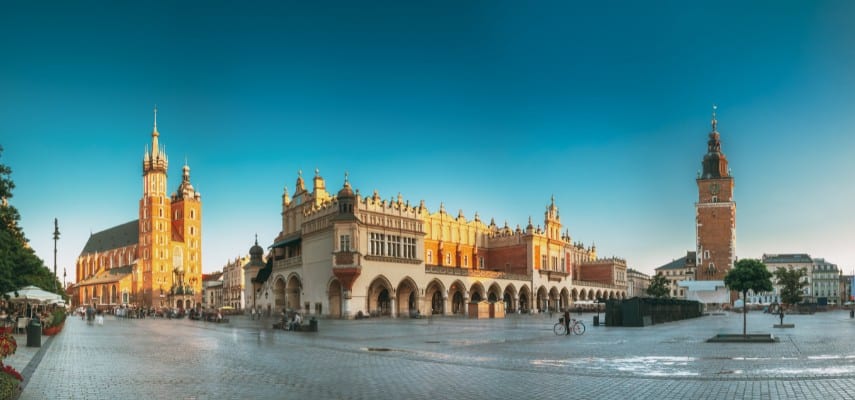
Argentina, a land of unparalleled natural beauty, vibrant culture, and a history as rich and complex as its landscapes, beckons travelers with a promise of adventure. From the icy peaks of Patagonia to the steamy jungles of Iguazú, the sophisticated charm of Buenos Aires to the sun-drenched vineyards of Mendoza, this vast South American nation offers an experience unlike any other. Planning a trip to Argentina can seem daunting due to its sheer size and diversity, but with the right guidance, you can embark on an unforgettable odyssey. This comprehensive guide will walk you through everything you need to know to travel to Argentina, ensuring a seamless and enriching journey.
Getting There: Your Gateway to the South
The primary international gateway to Argentina is Ministro Pistarini International Airport (EZE), commonly known as Ezeiza, located about 35 kilometers southwest of Buenos Aires. Most major airlines offer direct or connecting flights to EZE from North America, Europe, and other parts of South America.

Related Articles about Unlocking the Wonders of Argentina: Your Ultimate Guide to a South American Odyssey:
- Busan Beckons: A Symphony of Sea, Culture, and Culinary Delights
- Hollywood Glamour and Pacific Dreams: A Guide to the Top Attractions of Los Angeles
- The Steppe’s Grandeur: Unveiling Kazakhstan’s Premier Hotels and Unforgettable Experiences
- Poland: A Journey Through History, Culture, and Untamed Beauty
- Rome: An Eternal Journey Through History, Art, and La Dolce Vita
Visa Requirements: For citizens of many countries, including the United States, Canada, the United Kingdom, Australia, New Zealand, and most European Union nations, a visa is not required for tourist stays of up to 90 days. You will generally need a valid passport with at least six months of validity remaining beyond your intended departure date, proof of onward travel, and sometimes proof of sufficient funds. Always check the latest visa regulations with the Argentine embassy or consulate in your country before planning your trip, as requirements can change.
Currency & Exchange: The official currency is the Argentine Peso (ARS). Argentina has a unique economic situation that often results in a significant difference between the official exchange rate and a parallel market rate, often referred to as the "blue dollar" rate (dólar blue). While the situation can fluctuate, it’s often more advantageous to exchange cash (US dollars are widely accepted) at these unofficial but commonly used rates. Many businesses also accept credit cards, but be aware that they typically use the official rate, and surcharges may apply. It’s wise to carry a mix of cash and cards, and always clarify the exchange rate or payment method before making a purchase. ATMs are available but can have low withdrawal limits and high fees.
A Tapestry of Time: A Glimpse into Argentina’s History
Argentina’s history is a fascinating blend of indigenous heritage, European colonialism, and waves of immigration that have shaped its unique identity.
The land was originally inhabited by diverse indigenous groups, including the Guaraní, Mapuche, and Diaguita, whose cultures still echo in certain regions, particularly the Northwest. Spanish colonization began in the 16th century, leading to the establishment of Buenos Aires in 1536 (re-founded in 1580) and a vast Viceroyalty of the Río de la Plata.
The early 19th century brought the struggle for independence, culminating in the declaration of independence in 1816, with General José de San Martín playing a pivotal role. The subsequent decades were marked by civil wars between federalists and unitarians, eventually leading to the formation of the modern Argentine Republic.
The late 19th and early 20th centuries saw massive European immigration, primarily from Italy and Spain, which profoundly influenced Argentina’s culture, language (the unique Rioplatense Spanish), cuisine, and architecture. This period also brought economic prosperity, making Argentina one of the wealthiest nations in the world at the time, fueled by agricultural exports.
The 20th century was characterized by political instability, including military coups, economic booms and busts, and the rise of Peronism under Juan Perón and his iconic wife, Eva Perón ("Evita"). While the later 20th century saw periods of military dictatorship and human rights abuses, Argentina transitioned back to democracy in 1983. Today, Argentina is a vibrant democracy grappling with its past while looking towards a future defined by its rich cultural heritage and incredible natural resources. This history is palpable in its architecture, museums, and the passionate spirit of its people.
Top Attractions: A Continent in Miniature

Argentina’s size means it offers an incredible range of attractions. Here are some of the absolute highlights:
-
Buenos Aires: The Paris of South America: The capital city is a must-visit.
- Tango: Immerse yourself in the soul of Argentina with a tango show or a lesson in a milonga.
- Recoleta Cemetery: An architectural marvel and the resting place of Eva Perón.
- San Telmo: Explore the cobblestone streets, antique markets (especially on Sundays), and historic cafés.
- Palermo: Trendy neighborhood with boutique shops, excellent restaurants, and beautiful parks.
- La Boca: Famous for the colorful Caminito street and its vibrant, if touristy, atmosphere.
- Teatro Colón: One of the world’s most beautiful opera houses.
- Plaza de Mayo: The historic heart of the city, surrounded by government buildings and the iconic Casa Rosada.
-
Patagonia: Land of Glaciers and Mountains: This vast southern region is a wilderness paradise.
- Perito Moreno Glacier (El Calafate): Witness the awe-inspiring spectacle of massive ice chunks calving into Lago Argentino. Trekking on the glacier is an unforgettable experience.
- Mount Fitz Roy & Cerro Torre (El Chaltén): A hiker’s paradise with stunning granite spires and world-class trekking trails, from easy day hikes to challenging multi-day expeditions.
- Ushuaia: The End of the World: The southernmost city on Earth, a gateway to Tierra del Fuego National Park and Antarctic cruises.
- Wildlife: Spot penguins, sea lions, whales (especially in Peninsula Valdés), and diverse birdlife.
-
Iguazú Falls: Nature’s Masterpiece: Located on the border with Brazil, these colossal waterfalls are a UNESCO World Heritage site and one of the world’s most spectacular natural wonders.
- Garganta del Diablo (Devil’s Throat): The most powerful section, where 14 falls plummet simultaneously, creating an immense roar and permanent mist.
- Walkways & Boat Rides: Explore numerous viewpoints on both the Argentine and Brazilian sides, and consider a boat trip right into the spray of the falls.
-
Mendoza: Wine Country and Andes Adventures:
- Malbec Wine: Tour renowned wineries in the foothills of the Andes, enjoy tastings, and learn about the winemaking process.
- Andes Mountains: Go hiking, horseback riding, or white-water rafting, with the majestic Aconcagua (the highest peak in the Americas) in the distance.
-
Salta & Jujuy: The Northwest’s Indigenous Heart:
- Quebrada de Humahuaca: A UNESCO World Heritage site with stunning multi-colored mountains, ancient villages, and rich indigenous culture.
- Salinas Grandes: Vast salt flats offering surreal landscapes.
- Cafayate: Another wine region known for its high-altitude Torrontés white wine.
- Colonial Architecture: Salta city boasts beautiful colonial buildings and a relaxed atmosphere.
-
Córdoba: Jesuit Legacy and Student Vibes: Argentina’s second-largest city, known for its well-preserved Jesuit Block (a UNESCO site) and vibrant university atmosphere.
Navigating the Land: Transportation within Argentina
Given Argentina’s immense size, understanding internal transportation is key to efficient travel.
- Domestic Flights: For covering long distances quickly, domestic flights are essential. Aerolíneas Argentinas is the national carrier, while budget airlines like Flybondi and JetSMART offer more competitive prices. Book in advance, especially for popular routes to Patagonia or Iguazú.
- Long-Distance Buses (Colectivos): Argentina boasts an excellent, extensive, and comfortable long-distance bus network. Buses come in different classes, from "semi-cama" (reclining seats) to "cama" (fully reclining beds) and even "cama suite" (private cabins). They are a great option for overnight journeys or exploring regions like the Northwest.
- Rental Cars: Renting a car offers flexibility, especially in regions like Patagonia or the Northwest, where you might want to explore at your own pace. Be prepared for varying road conditions and ensure you have appropriate insurance.
- Trains: While there are some scenic tourist trains (like the Tren a las Nubes in Salta), Argentina’s passenger rail network is not as developed as its bus system for intercity travel.
- City Transportation:
- Buenos Aires: The Subte (subway) is efficient and covers key areas. Buses (colectivos) are extensive. Taxis are plentiful, and ride-sharing apps like Uber, Cabify, and Didi are widely used. You’ll need a rechargeable SUBE card for public transport.
- Other Cities: Taxis and ride-sharing apps are common, and many cities are walkable.
Where to Stay: Accommodation for Every Traveler
Argentina offers a diverse range of accommodation options to suit every budget and travel style.
- Hotels: From luxurious five-star establishments in Buenos Aires to charming boutique hotels (often called hoteles con encanto) and mid-range chains, you’ll find plenty of choices.
- Hostels: A popular option for budget travelers and backpackers, offering dormitory beds and private rooms, often with communal kitchens and social atmospheres.
- Apartments/Airbnb: For longer stays or those seeking more independence, renting an apartment through platforms like Airbnb or local agencies is a great option, especially in Buenos Aires.
- Estancias: Experience traditional Argentine ranch life by staying at an estancia, particularly popular in the Pampas region. Many offer horseback riding, gaucho demonstrations, and delicious asados (barbecues).
- Camping: In national parks, especially in Patagonia, camping is a popular and economical way to stay close to nature.
- Refugios (Mountain Huts): For serious hikers in Patagonia, staying in mountain refugios provides basic accommodation and a unique wilderness experience.
Essential Travel Tips for a Smooth Journey
- Learn Basic Spanish: While many people in tourist areas speak some English, knowing basic Spanish phrases will greatly enhance your experience and is highly appreciated by locals.
- Money Matters (The Blue Dollar): As mentioned, research the current "blue dollar" situation before you go. Carrying US dollars (new, crisp bills are preferred) to exchange can significantly stretch your budget. Be discreet when exchanging.
- Safety: Argentina is generally safe for tourists, but like any large country, exercise common sense. Be aware of your surroundings, especially in crowded areas, and avoid displaying valuables. Pickpocketing can occur in busy tourist spots.
- Food & Drink: Argentina is a culinary delight!
- Asado: Don’t leave without trying a traditional Argentine barbecue.
- Empanadas: Savory pastries filled with meat, cheese, or vegetables.
- Malbec: Argentina’s signature red wine is world-class.
- Dulce de Leche: A sweet caramel-like spread, a national obsession.
- Mate: The traditional herbal infusion, shared socially.
- Portions: Portions are often generous, especially steak.
- Tipping: Tipping is customary but not obligatory. For good service, 10% in restaurants is appreciated. For tour guides, a small amount is common.
- Pace Yourself: Argentina is enormous. Don’t try to see everything in one trip. Focus on a few regions to truly experience them.
- Packing: Pack layers. Even in summer, evenings can be cool, especially in the south. If traveling to Patagonia, bring sturdy hiking shoes, waterproofs, and warm clothing.
- Healthcare & Insurance: Purchase comprehensive travel insurance that covers medical emergencies, trip cancellations, and lost luggage. While public healthcare is available, private clinics offer higher standards, and insurance is essential.
- Siesta: In some smaller towns and during lunchtime, especially in warmer regions, many shops and businesses close for a few hours in the afternoon.
Best Time to Visit: Timing Your Argentine Adventure
Due to its vast north-south stretch, Argentina experiences diverse climates, meaning the "best" time to visit depends on your itinerary.
- Spring (September to November) & Autumn (March to May): These are generally considered the best times to visit Argentina. The weather is pleasant across most of the country, with fewer crowds than in summer.
- Buenos Aires: Mild and enjoyable.
- Mendoza: Autumn is grape harvest season (Vendimia), a lively time.
- Northwest: Dry and sunny, perfect for exploring.
- Patagonia: Spring sees wildflowers blooming and glaciers accessible before peak summer crowds. Autumn offers stunning fall foliage.
- Summer (December to February):
- Patagonia: This is peak season for Patagonia, with the best weather for hiking and outdoor activities. Book accommodation and tours well in advance.
- Iguazú Falls: Hot and humid, but the increased water flow makes the falls even more spectacular.
- Buenos Aires: Can be very hot and humid, with many locals leaving for vacation.
- Northwest: Rainy season, though usually short, heavy downpours rather than constant rain.
- Winter (June to August):
- Patagonia: Colder, with snow and ice, but excellent for skiing in resorts like Bariloche. Some hiking trails may be closed.
- Buenos Aires: Mild and pleasant, good for city exploration without the heat.
- Northwest: Dry and sunny days, but cold nights.
- Iguazú Falls: Less humid and cooler than summer.
Conclusion: Your Argentine Adventure Awaits
Argentina is a land of captivating contrasts, a place where the tango’s passion meets the Andes’ grandeur, where bustling European-style cities give way to untamed wilderness. By understanding its unique history, planning your itinerary around its incredible attractions, and equipping yourself with practical travel tips, you are well on your way to experiencing the magic of this South American jewel. Whether you dream of tracing Evita’s footsteps, marveling at colossal glaciers, sipping exquisite Malbec, or dancing the night away, Argentina promises an adventure that will linger in your heart long after you’ve returned home. Start planning your odyssey today – Argentina awaits!





